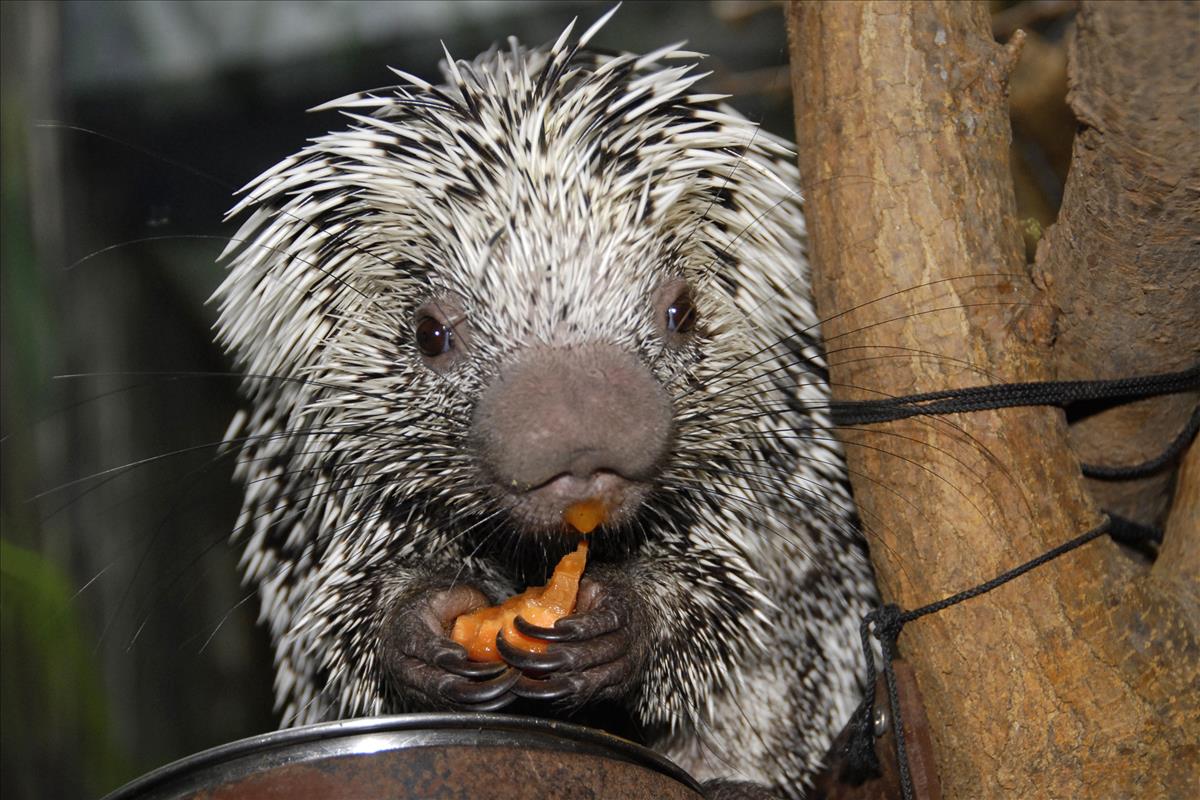Alerts
Please be advised that our bird aviaries are open!
Your Toronto Zoo is committed to the health and safety of the animals in our care. We take proactive steps to protect our birds from Avian Influenza which has been confirmed in a wild bird in southern Ontario, and some birds may still be off display.
Please note Splash Island is still closed and will not open until July due to unforeseen delays in construction. Please watch for updates on https://www.torontozoo.com/tz/splash or on our social media pages. Thank you!
Please note the following animals are currently not on display due to various reasons including Avian Bird Flu, and Covid-19 sensitivity:
- Flamingo, peacock, owl, bald eagle, and aviaries
- Some Kids Zoo Animals
- Cougar
- Moose
- Kangaroo walk through (kangaroos are still visible)
- Axolotl
We apologize for the inconvenience!


Mammal
Location at the Zoo:
Americas
Region: South America
Prehensile-tailed porcupine
The prehensile-tailed porcupine is covered in short, thick spines which are whitish or yellowish in color. These spines are intermixed with soft, darker hair. The underside is greyish. The lips and nose are fleshy. This porcupine can grow to 85 cm long, but half of that length consists of a spineless, prehensile (adapted to grasping or holding) tail. It can weigh up to 4.5 kg. The front and hind feet are well adapted for grasping branches. Each foot has four long-clawed toes.Conservation Status: IUCN
